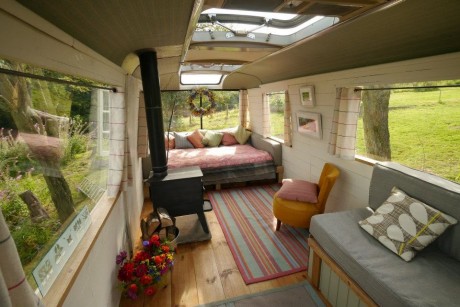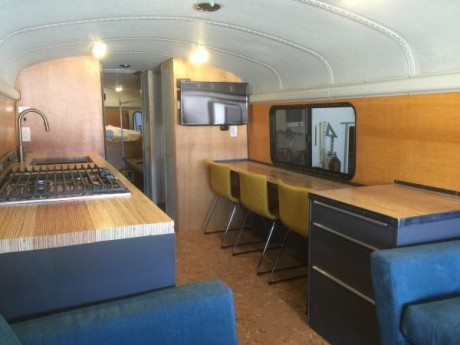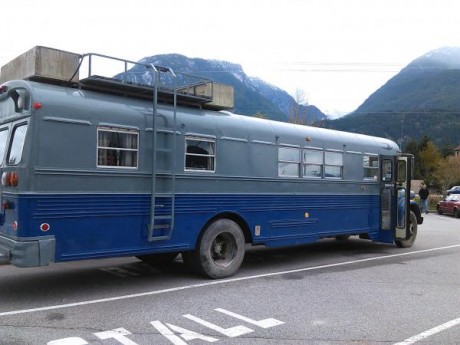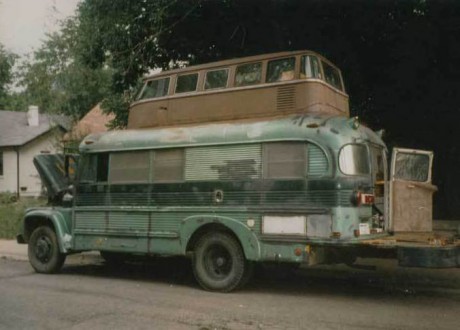The Wheels of These Homes Go Round and Round
Have you ever thought you understood the world around you, then all of sudden discover hidden subcultures right under your nose? You thought you knew your colleagues and neighbors and then find out they are really, deeply into things like Dungeons and Dragons, trainspotting and Hummels. Well, I thought I had a pretty broad understanding about small space housing. I know tiny houses, yurts, micro-apartments and many things in between. I thought I knew it all until I discovered Skoolie.net, “The School Bus Conversion Network.” Unbeknownst to me, there is a whole population of people turning old school busses into live-in dwellings.
Converting school busses makes sense in many ways. School busses are house sized, measuring up to 45’ long and 8 ½’ wide, giving ample room for living space (you can get smaller ones if so desired). They lend themselves to customization with nice open floor-plans. Their simple structures makes them easy to seal and insulate. They have ample light. They run on stout diesel motors and their mechanicals are engineered for daily use and are appropriately repairable and robust. And they can be had for cheap. You can pick up a used school bus in decent shape for $5-10K. Compare this to a tiny house, whose trailer might cost $5K–and you still need a decent-sized vehicle to port it around.
Because they are not purpose-built for habitation, school bus aficionados are more inclined to DIY-ing. In fact if you want a cheap, turnkey mobile place to live, a class C motorhome can be had for less money–and a lot less effort–than a converted school bus. However, a cheap motorhome will, in all probability, be cheaply built, with crappy finishes, fixtures and appliances. And the odds of standing out at the campground in a Winnebago are minimal relative to pulling up with a school bus with a VW Bus grafted to the roof.
School bus conversions do have some drawbacks, as Shawn from Schoolbusdriver.org points out. Standing room usually caps out at six feet in the middle, which is less than ideal for some such as this author. Transmissions are typically geared for stop and go driving, not highway cruising, which can make long trips slow and thirsty. And “Scraping years of petrified boogers and gum from under the seats is less fun than it sounds.”
It’s not entirely clear whether all of the busses on Skoolie are lived in or just a secondary dwelling. Either way, the site and its members present another interesting, mobile form of compact housing from which to choose from.
Images via Skoolie.net










